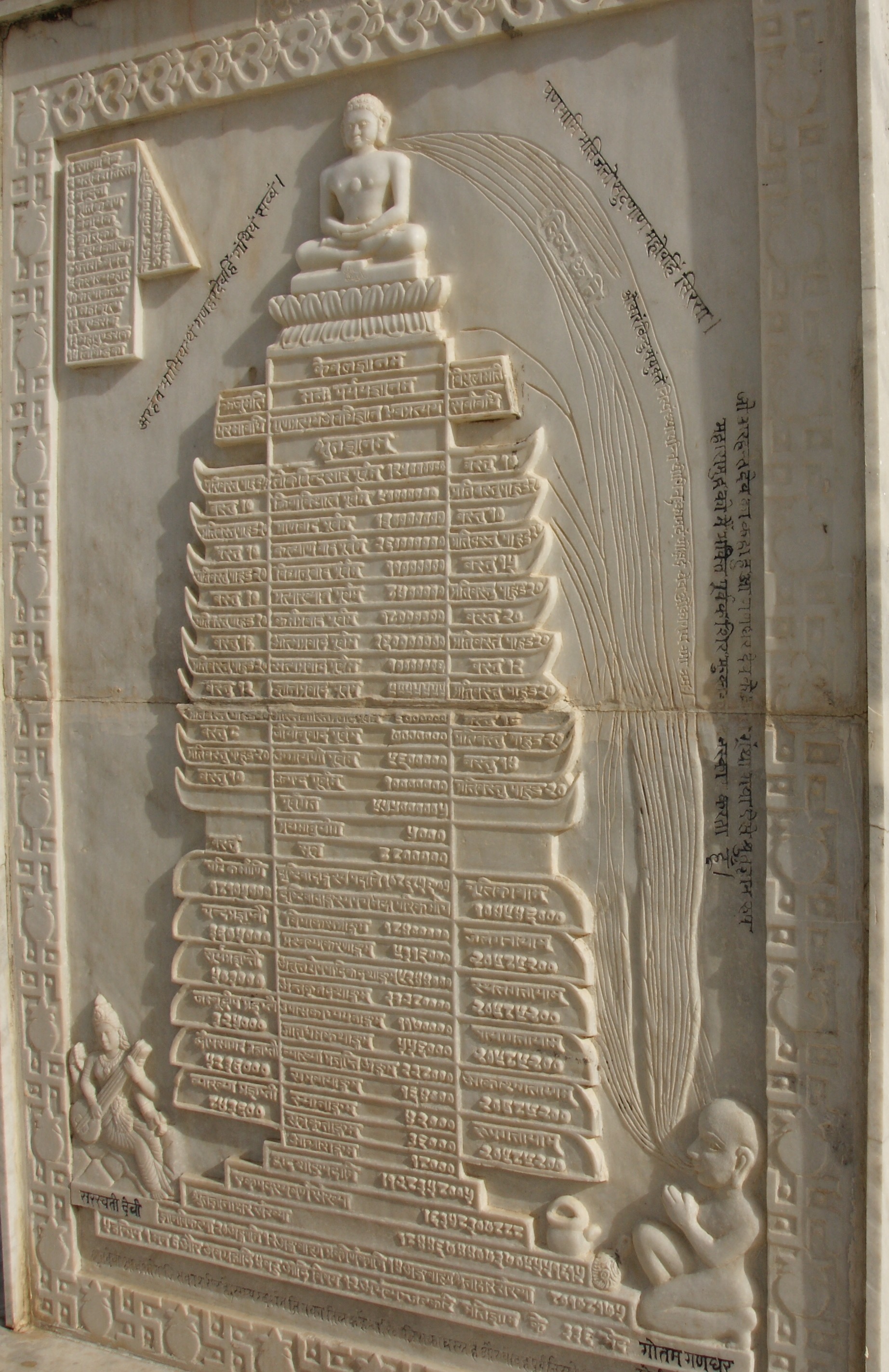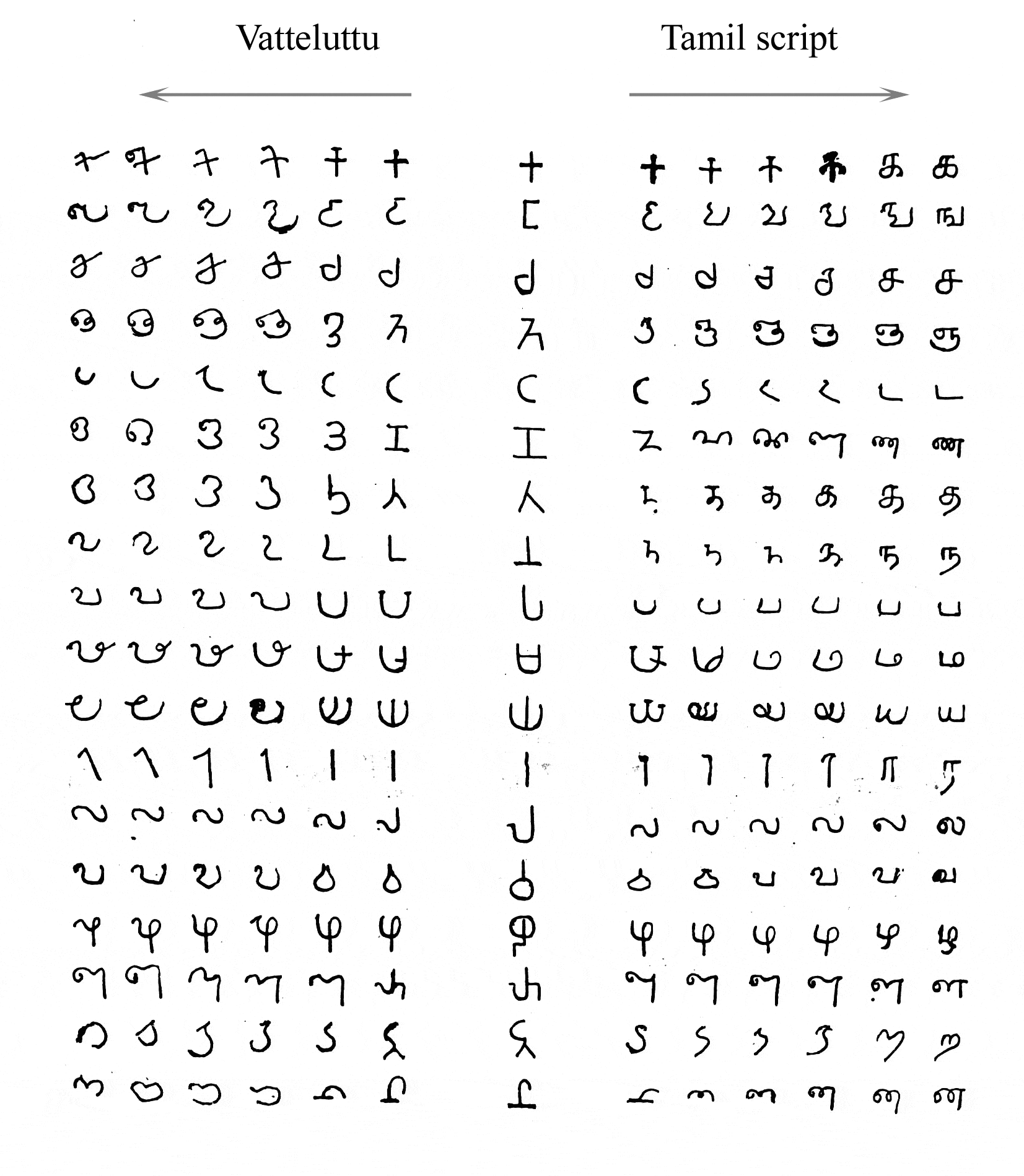|
Tamil Brahmi Script
Tamil-Brahmi, also known as Tamizhi or Damili, was a variant of the Brahmi script in southern India. It was used to write inscriptions in the early form of Old Tamil.Richard Salomon (1998) ''Indian Epigraphy: A Guide to the Study of Inscriptions in Sanskrit, Prakrit, and the other Indo-Aryan Languages'', Oxford University Press, pages 35-36 with footnote 103 The Tamil-Brahmi script has been paleographically and stratigraphically dated between the third century BCE and the first century CE, and it constitutes the earliest known writing system evidenced in many parts of Tamil Nadu, Kerala, Andhra Pradesh and Sri Lanka. Tamil Brahmi inscriptions have been found on cave entrances, stone beds, potsherds, jar burials, coins, seals, and rings. Tamil Brahmi resembles but differs in several minor ways from the Brahmi inscriptions found elsewhere on the Indian subcontinent such as the Edicts of Ashoka found in Andhra Pradesh.Richard Salomon (1998) ''Indian Epigraphy: A Guide to the Stud ... [...More Info...] [...Related Items...] OR: [Wikipedia] [Google] [Baidu] |
Abugida
An abugida (, from Ge'ez language, Ge'ez: ), sometimes known as alphasyllabary, neosyllabary or pseudo-alphabet, is a segmental Writing systems#Segmental writing system, writing system in which consonant-vowel sequences are written as units; each unit is based on a consonant letter, and vowel notation is secondary. This contrasts with a full alphabet, in which vowels have status equal to consonants, and with an abjad, in which vowel marking is absent, Abjad#Impure abjads, partial, or optional (although in less formal contexts, all three types of script may be termed alphabets). The terms also contrast them with a syllabary, in which the symbols cannot be split into separate consonants and vowels. Related concepts were introduced independently in 1948 by James Germain Février (using the term ) and David Diringer (using the term ''semisyllabary''), then in 1959 by Fred Householder (introducing the term ''pseudo-alphabet''). The Ethiopian Semitic languages, Ethiopic term "abugi ... [...More Info...] [...Related Items...] OR: [Wikipedia] [Google] [Baidu] |
Coin
A coin is a small, flat (usually depending on the country or value), round piece of metal or plastic used primarily as a medium of exchange or legal tender. They are standardized in weight, and produced in large quantities at a mint in order to facilitate trade. They are most often issued by a government. Coins often have images, numerals, or text on them. ''Obverse'' and its opposite, ''reverse'', refer to the two flat faces of coins and medals. In this usage, ''obverse'' means the front face of the object and ''reverse'' means the back face. The obverse of a coin is commonly called ''heads'', because it often depicts the head of a prominent person, and the reverse ''tails''. Coins are usually made of metal or an alloy, or sometimes of man-made materials. They are usually disc shaped. Coins, made of valuable metal, are stored in large quantities as bullion coins. Other coins are used as money in everyday transactions, circulating alongside banknotes. Usually the highest va ... [...More Info...] [...Related Items...] OR: [Wikipedia] [Google] [Baidu] |
Potsherd
In archaeology, a sherd, or more precisely, potsherd, is commonly a historic or prehistoric fragment of pottery, although the term is occasionally used to refer to fragments of stone and glass vessels, as well. Occasionally, a piece of broken pottery may be referred to as a shard. While the spelling shard is generally reserved for referring to fragments of glass vessels, the term does not exclude pottery fragments. The etymology is connected with the idea of breakage, from Old English ''sceard'', related to Old Norse ''skarð'', "notch", and Middle High German ''schart'', "notch". A sherd or potsherd that has been used by having writing painted or inscribed on it can be more precisely referred to as an ostracon An ostracon (Greek: ''ostrakon'', plural ''ostraka'') is a piece of pottery, usually broken off from a vase or other earthenware vessel. In an archaeological or epigraphical context, ''ostraca'' refer to sherds or even small pieces of ston .... The analysis of ... [...More Info...] [...Related Items...] OR: [Wikipedia] [Google] [Baidu] |
Guru
Guru ( sa, गुरु, IAST: ''guru;'' Pali'': garu'') is a Sanskrit term for a "mentor, guide, expert, or master" of certain knowledge or field. In pan-Indian traditions, a guru is more than a teacher: traditionally, the guru is a reverential figure to the disciple (or '' shisya'' in Sanskrit, literally ''seeker f knowledge or truth'' or student, with the guru serving as a "counselor, who helps mold values, shares experiential knowledge as much as literal knowledge, an exemplar in life, an inspirational source and who helps in the spiritual evolution of a student". Whatever language it is written in, Judith Simmer-Brown explains that a tantric spiritual text is often codified in an obscure twilight language so that it cannot be understood by anyone without the verbal explanation of a qualified teacher, the guru. A guru is also one's spiritual guide, who helps one to discover the same potentialities that the ''guru'' has already realized. The oldest references to the concep ... [...More Info...] [...Related Items...] OR: [Wikipedia] [Google] [Baidu] |
Lipi (script)
''Lipi'' ( sa, लिपि) means 'writing, letters, alphabet', and contextually refers to scripts, the art or manner of writing, or in modified form such as ''lipī'' () to painting, decorating or anointing a surface to express something. The term ''lipi'' appears in multiple texts of Hinduism, Buddhism, and Jainism, some of which have been dated to the 1st millennium BCE. Section 3.2.21 of Pāṇini's ''Aṣṭādhyāyī'', composed before the mid 4th century BCE, for example, mentions ''lipi'' in the context of writing. However, Panini does not describe or name the Sanskrit script. The ''Arthashastra'', in section 1.2–5, asserts that ''lipi'' was a part of the education system in ancient India. According to Buddhist texts such as '' Lalitavistara Sūtra'', young Siddhartha – the future Buddha – mastered philology and scripts at a school from Brahmin Lipikara and Deva Vidyasinha.Lopon Nado (1982), ''The Development of Language in Bhutan'', The Journal of the Internatio ... [...More Info...] [...Related Items...] OR: [Wikipedia] [Google] [Baidu] |
Pannavana Sutta
Jain literature (Sanskrit: जैन साहित्य) refers to the literature of the Jain religion. It is a vast and ancient literary tradition, which was initially transmitted orally. The oldest surviving material is contained in the canonical ''Jain Agamas,'' which are written in Ardhamagadhi, a Prakrit ( Middle-Indo Aryan) language. Various commentaries were written on these canonical texts by later Jain monks. Later works were also written in other languages, like Sanskrit and Maharashtri Prakrit. Jain literature is primarily divided between the canons of the ''Digambara'' and ''Śvētāmbara'' orders. These two main sects of Jainism do not always agree on which texts should be considered authoritative. More recent Jain literature has also been written in other languages, like Marathi, Tamil, Rajasthani, Dhundari, Marwari, Hindi, Gujarati, Kannada, Malayalam and more recently in English. Beliefs The Jain tradition believes that their religion is eternal, and the te ... [...More Info...] [...Related Items...] OR: [Wikipedia] [Google] [Baidu] |
Samavayanga Sutra
Samavayanga Sutra (c. 3rd-4th century BCE) is the 4th amongst the 12 Angas of the Jaina canon. The sutra is believed to have been composed by Gandhara Sudharmaswami. This ancient manuscript is the holy book of the Svetambara sect. This text contains the essence of Jain religion, defined and catalogued systematically. Written c. 300 BCE, it is a part of the collection of texts containing Lord Mahavira’s teachings, collectively termed as Agama Sutras. Subject matter of the Agama Samavayanga Sutra contains elements of mathematics and astronomy. One of the interesting aspects of this text is its portrayal of Monasticism and spirituality in the terms of numerology. Mathematics - The Samavayanga Sutra seems to be in continuation of the Sthananga Sutra and follows the numeric method of describing substances from 1 to 1 billion. Astronomy – It contains discussion on Mount Meru, the jyotishcakra, the Jambudvipa itself, the measurements used in the Jaina canon, the Jaina Loka ... [...More Info...] [...Related Items...] OR: [Wikipedia] [Google] [Baidu] |
Jainism
Jainism ( ), also known as Jain Dharma, is an Indian religions, Indian religion. Jainism traces its spiritual ideas and history through the succession of twenty-four tirthankaras (supreme preachers of ''Dharma''), with the first in the current time cycle being Rishabhadeva, whom the tradition holds to have lived millions of years ago, the twenty-third ''tirthankara'' Parshvanatha, whom historians date to the 9th century BCE, and the twenty-fourth ''tirthankara'' Mahāvīra, Mahavira, around 600 BCE. Jainism is considered to be an eternal ''dharma'' with the ''tirthankaras'' guiding every time cycle of the Jain cosmology, cosmology. The three main pillars of Jainism are ''Ahimsa in Jainism, ahiṃsā'' (non-violence), ''anekāntavāda'' (non-absolutism), and ''aparigraha'' (asceticism). Jain monks, after positioning themselves in the sublime state of soul consciousness, take five main vows: ''ahiṃsā'' (non-violence), ''satya'' (truth), ''Achourya, asteya'' (not stealing), ''b ... [...More Info...] [...Related Items...] OR: [Wikipedia] [Google] [Baidu] |
Tamil Brahmi
Tamil-Brahmi, also known as Tamizhi or Damili, was a variant of the Brahmi script in southern India. It was used to write inscriptions in the early form of Old Tamil.Richard Salomon (1998) ''Indian Epigraphy: A Guide to the Study of Inscriptions in Sanskrit, Prakrit, and the other Indo-Aryan Languages'', Oxford University Press, pages 35-36 with footnote 103 The Tamil-Brahmi script has been paleographically and stratigraphically dated between the third century BCE and the first century CE, and it constitutes the earliest known writing system evidenced in many parts of Tamil Nadu, Kerala, Andhra Pradesh and Sri Lanka. Tamil Brahmi inscriptions have been found on cave entrances, stone beds, Sherd, potsherds, jar burials, coins, seals, and ring (jewellery), rings. Tamil Brahmi resembles but differs in several minor ways from the Brahmi inscriptions found elsewhere on the Indian subcontinent such as the Edicts of Ashoka found in Andhra Pradesh.Richard Salomon (1998) ''Indian Epigr ... [...More Info...] [...Related Items...] OR: [Wikipedia] [Google] [Baidu] |
Tamil Script
The Tamil script ( , ) is an abugida script that is used by Tamils and Tamil language, Tamil speakers in India, Sri Lanka, Malaysia, Singapore, Indonesia and elsewhere to write the Tamil language. Certain minority languages such as Saurashtra language, Saurashtra, Badaga language, Badaga, Irula language, Irula and Paniya language, Paniya are also written in the Tamil script. Characteristics The Tamil script has 12 vowels (, , "soul-letters"), 18 consonants (, , "body-letters") and one special character, the (, ). is called "அக்கு", ''akku'' and is classified in Tamil orthography as being neither a consonant nor a vowel. However, it is listed at the end of the vowel set. The script is Syllabary, syllabic, not alphabetic. The complete script, therefore, consists of the 31 letters in their independent form and an additional 216 combinatory letters, for a total of 247 (12+18+216+1) combinations (, , "soul-body-letters") of a consonant and a vowel, a mute consonant o ... [...More Info...] [...Related Items...] OR: [Wikipedia] [Google] [Baidu] |
Kamil Zvelebil
Kamil Václav Zvelebil (November 17, 1927 – January 17, 2009) was a Czech scholar in Indian literature and linguistics, notably Tamil, Sanskrit, Dravidian linguistics and literature and philology. Life and career Zvelebil studied at the Charles University in Prague from 1946 to 1952 where he majored in Indology, English, literature and philosophy. After obtaining his PhD in 1952 and until 1970 he was a senior research fellow in Tamil and Dravidian linguistics and literature at the Oriental Institute of the Czechoslovak Academy of Sciences. He held the role of associate professor of Tamil and Dravidian at Charles University in Prague until 1968, when he and his family (including his son, the later archaeologist, Marek Zvelebil) were forced to flee after the Warsaw Pact invasion of Czechoslovakia. They fled to the United States at first, but later settled in the Netherlands. During the late 1960s, he made many field trips including those to South India. From 1965 to 1966, he w ... [...More Info...] [...Related Items...] OR: [Wikipedia] [Google] [Baidu] |





